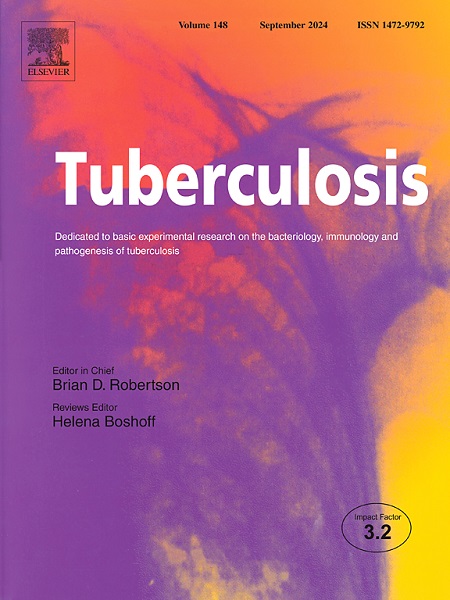Combining bioinformatics and machine learning to identify diagnostic biomarkers of TB associated with immune cell infiltration
IF 2.9
3区 医学
Q3 IMMUNOLOGY
引用次数: 0
Abstract
Objective
The asymptomatic nature of tuberculosis (TB) during its latent phase, combined with limitations in current diagnostic methods, makes accurate diagnosis challenging. This study aims to identify TB diagnostic biomarkers by integrating gene expression screening with machine learning, evaluating their diagnostic potential and correlation with immune cell infiltration.
Methods
We analyzed GSE19435, GSE19444, and GSE54992 datasets to identify differentially expressed genes (DEGs). GO and KEGG enrichment characterized gene functions. Three machine learning algorithms identified potential biomarkers, validated with GSE83456, GSE62525, and RT-qPCR on clinical samples. Immune cell infiltration was analyzed and verified with blood data.
Results
249 DEGs were identified, with PDE7A and DOK3 emerging as potential biomarkers. RT-qPCR confirmed their expression, showing AUCs above 0.75 and a combined AUC of 0.926 for TB diagnosis. Immune infiltration analysis revealed strong correlations between PDE7A, DOK3, and immune cells.
Conclusion
PDE7A and DOK3 show strong diagnostic potential for TB, closely linked to immune cell infiltration, and may serve as promising biomarkers and therapeutic targets.
结合生物信息学和机器学习,确定与免疫细胞浸润相关的结核病诊断生物标志物
目的结核病(TB)潜伏期无症状,再加上目前诊断方法的局限性,使得准确诊断具有挑战性。本研究旨在通过将基因表达筛选与机器学习相结合来确定结核病诊断生物标志物,评估其诊断潜力以及与免疫细胞浸润的相关性。方法我们分析了 GSE19435、GSE19444 和 GSE54992 数据集,以确定差异表达基因(DEGs)。GO和KEGG富集描述了基因功能。三种机器学习算法确定了潜在的生物标记物,并通过 GSE83456、GSE62525 和临床样本的 RT-qPCR 进行了验证。结果 发现了 249 个 DEGs,其中 PDE7A 和 DOK3 成为潜在的生物标记物。RT-qPCR 证实了这两种基因的表达,其 AUC 值高于 0.75,对结核病诊断的综合 AUC 值为 0.926。免疫浸润分析显示 PDE7A、DOK3 和免疫细胞之间存在很强的相关性。
本文章由计算机程序翻译,如有差异,请以英文原文为准。
求助全文
约1分钟内获得全文
求助全文
来源期刊

Tuberculosis
医学-呼吸系统
CiteScore
4.60
自引率
3.10%
发文量
87
审稿时长
49 days
期刊介绍:
Tuberculosis is a speciality journal focusing on basic experimental research on tuberculosis, notably on bacteriological, immunological and pathogenesis aspects of the disease. The journal publishes original research and reviews on the host response and immunology of tuberculosis and the molecular biology, genetics and physiology of the organism, however discourages submissions with a meta-analytical focus (for example, articles based on searches of published articles in public electronic databases, especially where there is lack of evidence of the personal involvement of authors in the generation of such material). We do not publish Clinical Case-Studies.
Areas on which submissions are welcomed include:
-Clinical TrialsDiagnostics-
Antimicrobial resistance-
Immunology-
Leprosy-
Microbiology, including microbial physiology-
Molecular epidemiology-
Non-tuberculous Mycobacteria-
Pathogenesis-
Pathology-
Vaccine development.
This Journal does not accept case-reports.
The resurgence of interest in tuberculosis has accelerated the pace of relevant research and Tuberculosis has grown with it, as the only journal dedicated to experimental biomedical research in tuberculosis.
 求助内容:
求助内容: 应助结果提醒方式:
应助结果提醒方式:


